Search results for: Mckinsey 7s
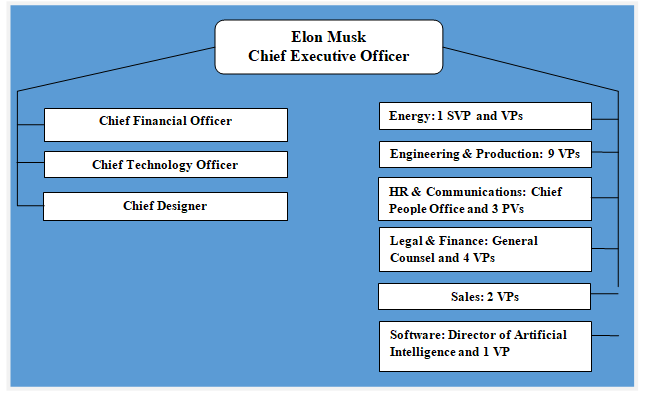
Tesla is a unique company in many ways and this uniqueness also extends to its organizational culture. Tesla organizational structure integrates the following: 1. Unique organizational structure. “Tesla, unlike most companies its size, doesn’t have any known management structure. There’s no organizational chart or public list of senior leaders.”[1] Nevertheless, Tesla organizational structure can be characterized as divisional. 2. Tesla CEO Elon Musk has issues with delegation. Workaholic and micromanagement nature of Elon Musk, as well as his sleep deprivation work habits have become well-known. Famous author and businesswoman Arianna Huffington even wrote an open letter to Musk urging him to get more sleep and learn to delegate. Musk’s issues with delegation has implications on Tesla corporate structure in a way that he has more people directly reporting to him than any other CEO in auto industry. 3. Divisional and flexible structure. Although it is difficult to list Tesla organizational structure under a specific rigid category due to its unique nature, the structure can be characterised as divisional and flexible. As it is illustrated in figure below, Tesla organizational structure comprises a number of divisions such as energy, engineering and production, HR and communications, legal and finance, sales and software. Each division is led by several vice presidents, except software division, which is led by one vice president and Director of Artificial Intelligence. Tesla Organizational Structure Tesla benefits from divisional organizational structure through less bureaucracy compared to many other companies of similar sizes. Divisional organizational structure also helps the electric automaker to increase the speed of communication among different layers of management with positive implications on decision making and flexibility of the business. Tesla Inc. Report contains the above analysis of Tesla organizational structure. The report illustrates the application of the major analytical strategic frameworks in business studies such as…
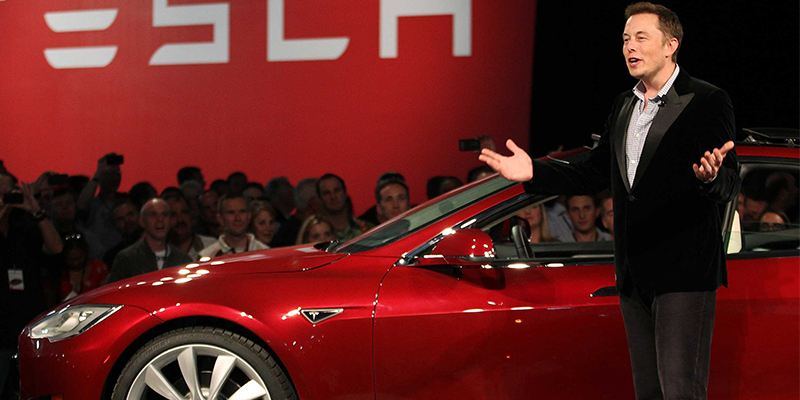
Tesla leadership is frequently a topic of heated debates. Tesla CEO and co-founder Elon Musk is a controversial figure. At the same time he is admired worldwide for his entrepreneurial and leadership skills. Elon Musk is a successful serial entrepreneur with a reputation as a creative genius who founded PayPal, Space X and the Boring Company. Each of these companies has become highly successful in its respective field in the global scale. Musk also has been a driving force behind the rapid development of Tesla, assuming the roles of CEO and Product Architect with the company. He was considered as an effective visionary leader credited with the successful launch of Tesla Roadster in 2018, the first electric car to use lithium-ion battery cells. Later, Musk oversaw the launch Model S, Model X and Model 3 electric vehicles and acquisition of Solar City Corp. for USD 2,6 billion in stock. The company’s board of directors comprises 10 people, including experienced and accomplished business leaders such as Oracle founder Larry Ellison and former 21st Century Fox CEO James Murdoch. It can be argued that one of the major issues with Tesla leadership is micro-management by CEO Musk and a wide range of roles within the company Musk attempts to perform at the same time. In an interview in August 2018, Elon Musk complained about exhaustion taking a toll on his physical health, working up to 120 hours a week and about times he has to spend three or four days at the factory without going outside.[1] Tesla Inc. Report contains the above analysis of Tesla leadership. The report illustrates the application of the major analytical strategic frameworks in business studies such as SWOT, PESTEL, Porter’s Five Forces, Value Chain analysis, Ansoff Matrix and McKinsey 7S Model on Tesla. Moreover, the report contains analyses of…

Tesla business strategy can be broadly classified as product differentiation. Accordingly, the electric automaker differentiates its vehicles on the basis of sustainability, performance and design. Tesla business plan announced by Elon Musk in company’s website blog in 2006 was the following: Build sports car Use that money to build an affordable car Use that money to build an even more affordable car While doing above, also provide zero emission electric power generation options Tesla mission statement is to accelerate the world’s transition to sustainable energy. Tesla business strategy aims to accomplish this mission via the following three key principles: 1. Focus on electric cars. Tesla was founded on the belief that “people didn’t need to compromise to drive electric – that electric vehicles can be better, quicker and more fun to drive than gasoline cars.”[1] Accordingly, the company produced its Roadster, Model S, Model X and Model 3 fully electric cars that quickly became successful among the target customer segment attracting billions of dollars of advance payments. Tesla “aims to disrupt the automotive industry by creating many innovative pieces that fit together.”[2] 2. Ownership of distribution. Tesla does not work with dealers and distributors. Instead, the electric automaker is engaged in direct sales through its website. Moreover, Tesla has company-operated stores and galleries in shopping centres and other places popular among the target customer segment in the US and 35 other countries and regions worldwide. 3. Low cost of ownership. Tesla cars run on electricity, which is considerably cheaper than oil and gas. Moreover, owners of electric vehicles are offered various tax breaks and incentives from local governments in some areas. Tesla has a calculator on its website to tell customers exactly how much they save. Low cost of ownership is one of the main sources of Tesla competitive advantage. 4. Unconventional…

Grainger CSR (corporate social responsibility) programs and initiatives aim to address the issues of social awareness, environmental factors and ethical labour practices while promoting a greener, more culturally conscious attitude to both peers and customers. Grainger CSR Advisory Council has the mission of providing strategic awareness and encouraging transparency. Moreover, the global industrial supply company has CSR Working Group that leads programs to promote CSR goals. The company began using the Global Reporting Initiative’s Sustainability Reporting Standards in 2016 and, since 2017, has been a member of the Dow Jones Sustainability Index.[1] The B2B distributor offers more than 100,000 environmentally friendly products that help customers reduce energy consumption, conserve water, reduce waste and improve indoor air quality. [2] In 2018 the company was included in the top 10 placement in Barron’s “List of 100 Most Sustainable U.S. Companies” for the second time. Grainger Supporting Local Communities Hundreds of Grainger employees volunteered 8500 hours in local communities throughout the US in 2018 Members of Grainger workforce also help communities devastated by natural disasters worldwide In 2018, the global industrial supply company donated more than USD120,000 worth of products to Team Rubicon, a veteran-led group that helps communities worldwide get back on their feet after disasters. Grainger Educating and Empowering Workers All employees have completed Business Conduct Guidelines Training In 2017 the company provided 154 Grainger Tools for Tomorrow scholarships to employees in 85 participating colleges Grainger invested more than USD 4,5 million in employee education and development since 2006 Employee Health and Safety at Grainger Lost time incident rate per 100 employees decreased from 0,4 in 2017 to 0,3 in 2018 Total recordable incident rate per 100 employees totalled to 1,4 in 2017 and 2018 Grainger and Gender Equality and Minorities In total 38% of all workforce in…
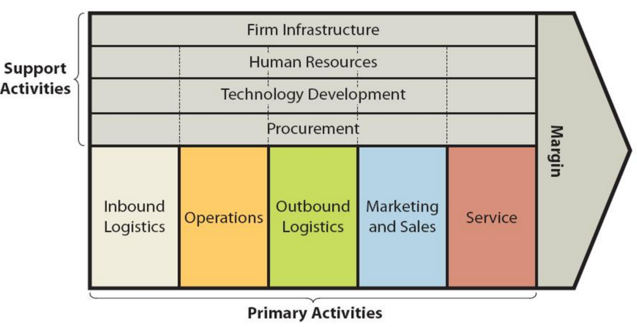
W.W. Grainger value chain analysis is an analytical framework that assists in identifying business activities that can create value and competitive advantage for global MRO products distributor. Figure below illustrates the essence of Grainger value chain analysis. W.W. Grainger Value chain analysis Grainger Primary Activities Grainger Inbound logistics Grainger inbound logistics involves receiving and storing MRO products by the global industrial supply company in its distribution centres for subsequent shipment to customers. The worldwide distributor of industrial products purchases approximately 1,7 million types of MRO products from approximately 5000 suppliers worldwide and stores them in distribution centres. Economies of scale is a major source of value creation in inbound logistics for the global industrial supply company. Additionally, the B2B distributor benefits from its strategic relationships with its suppliers in general and key suppliers in particular. Grainger Operations Grainger operations are divided into the following three segments: 1. United States segment. This segment generated sales of USD 8,6 billion in 2018, 72% of total revenue of the company.[1] The industrial supply company divides its customers in US segment into two categories according to complexity of their needs. a) Large customers in the US. Customers in this segment have complex needs and require services at their place of business. Grainger source of value creation in dealing with large customers in the US include adoption of partnership approach and assisting customers to reduce total cost of ownership in MRO spend by helping them to manage their labour, product and inventory costs. b) Medium customers in the US. This customer segment has less complex needs compared to large customers. Moreover, medium or mid-size customers in the US are mainly concerned with the solutions of their immediate business problems. Ranges and prices of products can be specified as major source of value creation…
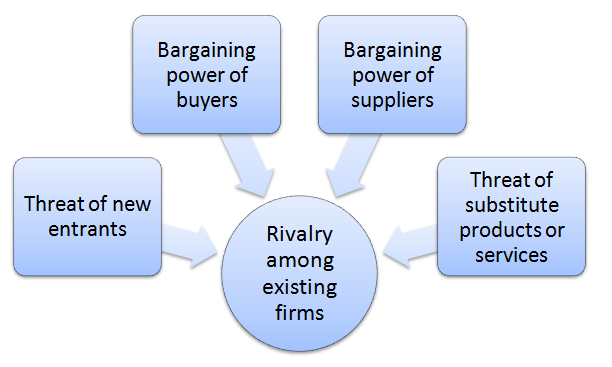
Porter’s Five Forces is a strategic analytical framework developed by Michael Porter (1979)[1]. The framework consists of five individual forces that shape an overall extent of competition in an industry. W.W. Grainger Porter’s Five Forces are illustrated in figure below: Porter’s Five Forces Threat of new entrants in W.W. Grainger Porter’s Five Forces Threat of new entrants into traditional B2B distribution is not significant. Inter-relationships of the following factors determine the extent of threat of new entrants into industrial distribution: 1. Economies of scale. Economies of scale is a critical success factor in B2B distribution. Grainger purchases more than 1,7 million types of products from approximately 5000 suppliers worldwide.[2] Accordingly, Grainger benefits from the economies of scale to a great extent with positive implications on the cost structure of the business. However, new market entrants are not able to benefit from the economies of scale to a similar extent and therefore, economies of scale emerges as an important entry barrier to the B2B distribution industry. 2. Capital requirements. Industrial distribution is a highly capital-intensive business. In order to be successful and challenge established market players, new entrants need to have wide range of products stored in warehouses and distribution centres. Substantial capital investments are needed to achieve all of these and unless new market entrants do not come up with innovative business models to disrupt the industry, capital requirements are likely to persist as an important entry barrier to the industry. 3. Expected retaliation from existing businesses. Current market players in B2B distribution are likely to retaliate against any new entrants that possess a considerable threat to their market share. This is a noteworthy entry barrier for potential new entrants to the industry. For example, once Amazon Business started to become a formidable player in the global market of…

W.W. Grainger marketing strategy was traditionally limited to its famous product catalogues and print and media advertisement. The company CEO D.G. Macpherson admitted in 2019 that marketing was a new skill for the global industrial supply company, but the company was learning very quickly.[1] The necessity for improvement of Grainger marketing strategy is fuelled by intensifying competition in general, and competition from Amazon business in particular. Grainger’s total advertisement expense totalled to USD316million, USD241 million and USD187 million for 2019, 2018 and 2017, respectively.[2] Grainger unique selling proposition is associated with extensive range of MRO products and deep knowledge of company’s sales force regarding main product categories. Moreover, competitive advantages of industrial products distributor include advanced customer services and omni-channel sales strategy. Grainger 7ps of marketing has traditionally focused on product element of the marketing mix to a greater extent compared to other elements. The B2B distributor boasts an extensive product range that includes about 1,7 million types of products supplied by about 5000 suppliers worldwide. [3] Starting from a few years ago, however, Grainger marketing strategy had to change to a certain extent to increase its focus on the price element of the marketing mix. Specifically, due to the increasing threat from Amazon Business, Grainger had to cut profit margin in 2017 to decrease the prices of many products. Segmentation, targeting and positioning practices is an integral part of Grainger marketing strategy and the B2B distributor pursues multi-segment type of positioning. Specifically, the industrial supply company appeals to MRO products needs of all types of customers – small, large and medium. The company targets small and medium businesses through Zoro and MonotaRO websites, whereas large customers with more complex needs are targeted via maintaining face-to-face direct relationships with numerous Grainger sales force representatives. W.W. Grainger Report contains the above analysis…

W.W. Grainger marketing communication mix is a framework that explains the application of individual elements of communication by the global industrial supply company. Individual elements of the marketing communication mix consist of print and media advertising, sales promotions, events and experiences, public relations, direct marketing and personal selling. W.W. Grainger Print and Media Advertising W.W. Grainger and its portfolio brands such as Zoro, MonotaRO and Cromwell use print and media advertising in an occasional manner. Specifically, the global industrial supply company uses TV commercials such as “Keeping America Running” and “We’ve got Your Back”, as well as, radio commercials. Additionally, the B2B distributor uses magazines, newspapers, billboards and posters forms of print and media advertising. It is important to note that despite increasing popularity of social media, up to date extensive potentials of viral marketing remain unutilised by Grainger. Lack of usage of viral marketing can be specified as one of the main shortcomings of Grainger marketing strategy. W.W. Grainger Sales Promotions W.W. Grainger uses the following forms of sales promotions: Clearance Centre on company website. The global industrial supply company offers discounts of up to 70% for some items purchased online. Money off coupons. Grainger does not offer coupons directly, but there are dozens of third-party companies such as Groupon, RetailMeNot and SlickDeals that offer money-saving coupons that can be used with the B2B distributor. Point of sale materials. The industrial supply company uses posers and display stands in its 457 branches worldwide[1] to increase the visibility of popular products and product categories. Customer Loyalty Program. Global MRO products distributor has Red Pass Plus Program that offers customer a set of advantages such as free next day delivery and savings of up to 15% on thousands of products.[2] W.W. Grainger Report contains a full…

W.W. Grainger segmentation, targeting and positioning refers to ways in which the global industrial supply company chooses specific companies among large base of potential customers and develops its product and service offering to appeal to the needs of a few chosen customers. Segmentation involves dividing population into groups according to certain characteristics. Grainger uses a set of segmentation criteria such as region, size of the company, turnover and potential annual MRO spending. Moreover, complexity of customer needs is an important segmentation criteria extensively employed by the industrial supply company. Targeting is the next stage after segmentation and it is associated with selecting specific groups to sell products to. Positioning refers to the selection of the marketing mix that appeals to the needs and wants of the target customer segment to the maximum extent. Grainger uses multi-segment type of positioning and accordingly, the B2B distributor exploits more than one segment at the same time. Specifically, Grainger positions its Zoro and MonotaRO websites to appeal to the needs of small and medium-sized customer segment with simple needs for MRO products. Different customer segment with more complex needs on the other hand, are targeted via High-Touch Solutions value proposition, which involves sales and service representatives, KeepStock inventory management system and collection of orders from branches. There are important differences between B2C (business-to-customer) and B2B (business-to-business) segmentation. These differences include the following: 1. More complex and rational decision making. Decision making process by Grainger target customer segment is complex and rational. It is opposite to B2C segment, where appeal can be made to customers’ needs on emotional level to influence the purchasing behaviour. This fact has direct implications on Grainger positioning in a way that the global industrial supply company has to base its value proposition on measurable and tangible advantages. 2. Complexity of…
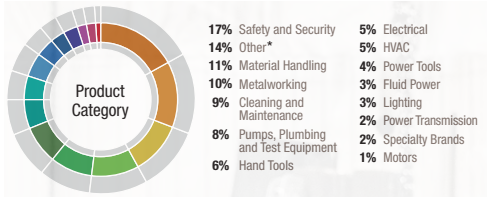
W.W. Grainger marketing mix (Grainger 7Ps of marketing) comprises elements of the marketing mix that consists of product, place, price, promotion, process, people and physical evidence. Product Element in W.W. Grainger Marketing Mix Grainger offers about 1,7 million types of products supplied by about 5000 suppliers worldwide. In 2019 no single product category comprised more than 17% of the global sales.[1] The figure below illustrates product categories of the global industrial supply company. Moreover, the B2B distributor offers certain services such as inventory management and technical support. Grainger Product Categories Place Element in W.W. Grainger Marketing Mix Grainger primarily operates in North America, Japan and Europe. The industrial supply company utilizes a wide range of sales channels such as online, mobile devices, sales representatives, local branches and product vending machines on customer sites. In 2018, 62 percent of Grainger’s revenue in the U.S. came from online channels, making it the 10th largest e-retailer in North America, according to Internet Retailer.1 Through Grainger.com, eProcurement connections, KeepStock solutions and mobile applications, the company continues to develop online capabilities that promote a personalized, relevant, effortless experience for each customer.[1] Price Element in W.W. Grainger Marketing Mix Traditionally, Grainger pricing strategy was premium pricing strategy. The worldwide distributor of industrial products was able to charge premium costs from its customer thanks to wide range of its products, convenience of purchasing and technical expertise. However, increasing popularity of Amazon Business posed a considerable threat to industrial distributors in general and Grainger in particular due to Amazon’s extensive experience and competence in e-commerce, customer service and timely product delivery. In response to growing threat from Amazon, Grainger changed its pricing strategy in 2017 to make prices more affordable. Moreover, the global industrial supply company placed greater emphasis on its Zoro brand in U.S.…
